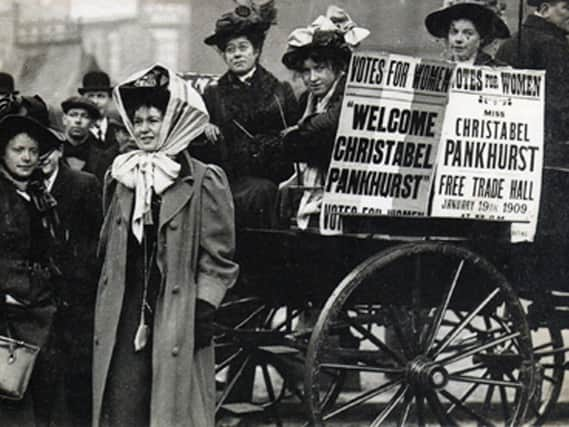A to Z of Leeds: The suffragette who valiantly fought for women’s right to vote


There are many reasons for this bold claim, from the people who've called this place home, to the history of the region, the developments underway and the talent and creativity we see on a daily basis. Here, we go through the alphabet to give you some reasons to be proud.
G IS FOR MARY GAWTHORPE
Woodhouse-born Mary Gawthorpe fought strongly for women’s rights from a young age.
Advertisement
Hide AdAdvertisement
Hide AdAfter qualifying as a teacher in the city, Gawthorpe became a socialist and was extremely active in the local branch of the National Union of Teachers, before becoming increasingly involved in the Women's Suffrage movement.
In 1905, she joined the WSPU, just two years after it was founded. In 1906, Gawthorpe left teaching to become a full-time, paid organiser for the WSPU in Leeds.
After attending a London demonstration Gawthorpe was arrested and sentenced to two months in Holloway Prison, where she continue to demonstrate her campaign through going on hunger-strike.
Several months later, in November 1907, Gawthorpe was again arrested, alongside Dora Marsden and Rona Robinson at Manchester University, after asking Lord Morley about the imprisoned women at Birmingham.
Advertisement
Hide AdAdvertisement
Hide AdThe three women were ejected from Lord Morley's meeting and were violently arrested by the police.
In October 1909 she received serious internal injuries when she was struck by one of the stewards at a political rally she was disrupting, the candidate of which was Winston Churchill.
At the time, this violence was reported by a young journalist named Cicily Fairfield, who was later better known as Rebecca West.
However, a charge of assault brought by Gawthorpe and another woman who was also injured at this rally was dismissed in court.
Advertisement
Hide AdAdvertisement
Hide AdGawthorpe also spoke at national events, including a rally in Hyde Park in 1908, which was attended by over 200,000 people.
Alongside Dora Marsden, Gawthorpe also was the co-editor of the radical periodical ‘The Freewoman: A Weekly Feminist Review’, which discussed topics such as women's wage work, housework, motherhood, suffrage movement and literature.
Gawthorpe then emigrated to New York City in 1916, where she was continued to campaign for women’s rights, being active in the American suffrage movement and later in the Trade Union movement, becoming an official of the Amalgamated Clothing Workers Union.
Gawthorpe chronicled her early life and campaigning efforts in her 1962 autobiography ‘Up Hill to Holloway’.
Advertisement
Hide AdAdvertisement
Hide AdShe died at the age of 92 in a New York nursing home in March 1973.
MORE A TO Z OF LEEDS:
D: The city landmark made of 18 million bricksE: Briggate's Empire TheatreF: The Farnley Wood Plot*********************
A message from the Editor:
Leeds has a fantastic story to tell - and the Yorkshire Evening Post has been rooted firmly at the heart of telling the stories of our city since 1890. We believe in ourselves and hope you believe in us too. We need your support to help ensure we can continue to be at the heart of life in Leeds.
Subscribe to our website and enjoy unlimited access to local news and information online and on our app. With a digital subscription, you can read more than 5 articles, see fewer ads, enjoy faster load times, and get access to exclusive newsletters and content. Click here to subscribe. For more details on our newspaper subscription offers click here.
Thank you
Laura Collins